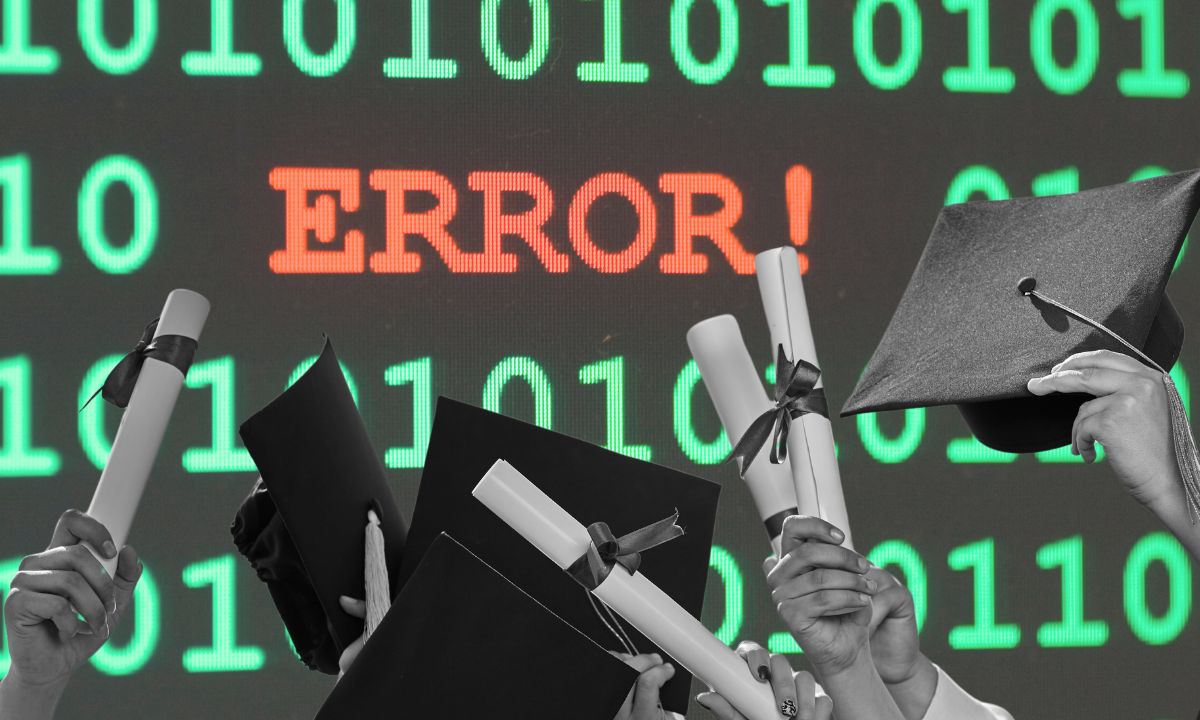State For Years Reported Incorrect Iowa High School Graduation Rates
Department of Education says rates were inflated due to a ‘code error.’

Get stories like this delivered straight to your inbox. Sign up for The 74 Newsletter
High school graduation rates have been incorrectly calculated for up to a decade due to a legacy code error, the Iowa Department of Education said Friday.
The state’s four- and five-year graduation rates were calculated using a legacy code that did not account for mobile students. Those are students who move school districts on a frequent basis for reasons including being in foster care, experiencing homelessness or moving as part of a military family, who transferred between districts and later dropped out of school.
According to the department’s news release, students in this category had been “inadvertently removed from the student cohort rather than included as non-graduates,” leading to the department reporting higher graduation rates.
The code causing errors has been used for at least a decade in determining graduation rates, according to the news release. But following the department’s Information and Analysis Services’ identification of the issue, the code has been corrected, and the state has released updated information on graduation rates from previous years that were impacted.
Jay Pennington, the department’s Bureau Chief of Information and Analysis Services, said that in addition to correcting the error, the education department also conducted a review of the underlying code, and plans to review graduation rate data on a student level and hold data comparisons to “ensure data quality in future years.”
“Calculating graduation rates is a complex process that requires examining four years of student-level data and includes taking into account multiple change events, such as when students move between districts or initially drop out but choose to re-enroll at a later date,” Pennington said in the release. “Upon a fresh review of the legacy code that had been used to calculate prior graduation rates, we identified that the code had not properly sequenced certain events. Specifically, students who transferred between districts and later dropped out were removed when they should have been kept in the cohort.”
The announcement was made as the department released the state’s four-year high school graduation rate for the class of 2023 Friday at 87.5%. That number is down 2.5% from initial reported graduation rate for class of 2022 of 89.9% by the education department in 2023, but higher than the corrected rate of 87.4%. The graduation rate for 2021 was also corrected from 90.2% to 87.8%.
The five-year graduation rate — data that reflects students who were not able to graduate with their class, but were able to complete high school with another year — was also impacted by the error. While the five-year graduation rate for the class of 2023 will not be available until 2025, the revised rates for previous years was released. The class of 2021 had a 90.1% graduation rate for five years, and the class of 2022 had a rate of 89.7%.
The state’s dropout rate, showing the proportion of students in grades 9 through 12 who drop out in the year, was not impacted by the code error. In the 2022-2023 school year, 4,718 students — 3.02% — dropped out, according to the education department data. This is a lower rate than the previous school year, at 3.04%.
According to the news release, Iowa’s graduation rate in 2023 is “consistent with the national standard and its neighboring states.” The four-year graduation rate of 87.5% is higher than Minnesota at 83.3%, Nebraska at 87.2% and South Dakota at 84.1%. Three neighboring states, Illinois, Wisconsin and Missouri, had higher rates — Illinois at 87.6%, Missouri at 89.9% and Wisconsin with a graduation rate of 90.5%.
Department of Education Director McKenzie Snow said the education department is “committed to empowering Iowans with accurate, actionable information on education outcomes.”
“Focused on transparency, the Department identified, corrected, and communicated the error in the underlying code, which has existed for at least 10 years, and its impact on previously reported graduation rates,” Snow said in the release. “The Department immediately instituted additional quality assurance measures and, moving forward, is modernizing its data verification procedures.”
The data, as well as breakdowns based on school districts and various student groups, such as English learners and students with disabilities, is available on the Department of Education’s website.
Iowa Capital Dispatch is part of States Newsroom, a nonprofit news network supported by grants and a coalition of donors as a 501c(3) public charity. Iowa Capital Dispatch maintains editorial independence. Contact Editor Kathie Obradovich for questions: [email protected]. Follow Iowa Capital Dispatch on Facebook and Twitter.
Get stories like these delivered straight to your inbox. Sign up for The 74 Newsletter

;)